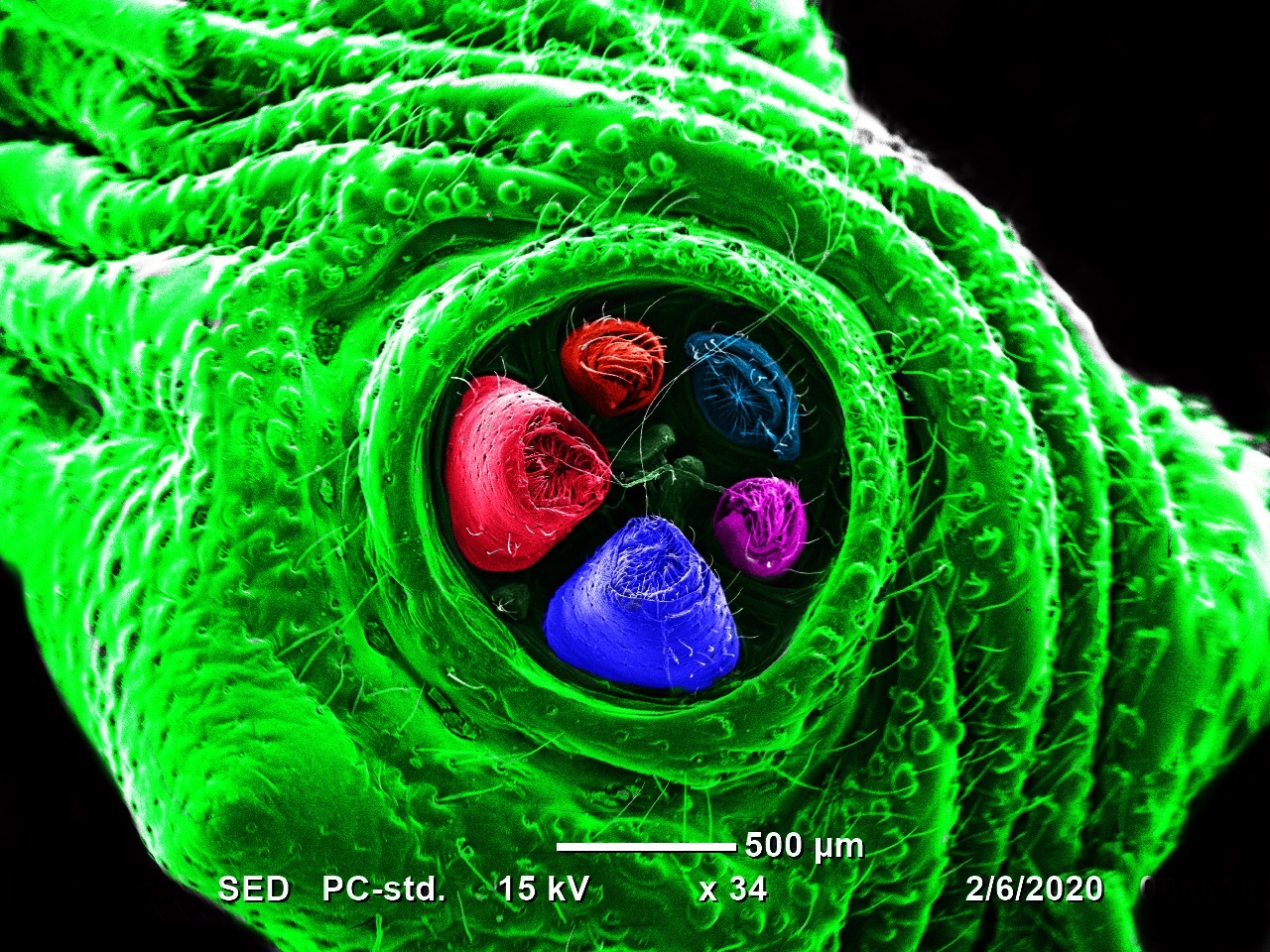The goal of FAU’s Art of Science photo contest, which is in its second year and comprised of two competitions, is to engage and educate the public in the unique study, scholarship and creative activities taking place in all of the University’s labs, out in the fields and across all of its disciplines.
The People’s Choice Award invites the public to select its favorite image among more than 30 finalists by voting here, with voting open until Nov. 30 at midnight. This is preceded by a contest where 13 judges from across the University chose three winners from more than 150 submissions. The winning photographs, including the 11 honorable mention winners, are here, and the top three winning photos can be downloaded via this link.
This year, Tricia Meredith, Ph.D., assistant research professor in FAU’s College of Education and director of research and principle investigator for the FAU High School Imaging Lab, took first place with her microscopic image of a spider’s spinnerets or silk-spinning organs. The photograph was captured in partnership with the Karen Slattery Educational Research Center for Child Development on FAU’s Boca Raton campus.
“I’m honored that my photograph was selected from so many wonderful images,” Meredith said. “The lab is meant to be a collaborative research hub that provides mentorship for the students and this image is a great example of how it can help people understand the beauty of the natural world.”
Imaging lab technicians scanned the spider in the garden habitat of the voluntary prekindergarten class so the children could discover there is more to the harmless spiny orb-weaver spider than just its’ scary-looking exterior.
Second place went to Charlene Fournier, a graduate student in the Charles E. Schmidt College of Science, for her picture of a male hybrid monkey born in a habituated mixed-species group between red-tailed monkeys and blue monkeys. Ongoing hybridization between these two species occurs in Gombe National Park, Tanzania, which provides a natural laboratory to study hybridization in the wild.
Third place belongs to Jasmine Coyle, a research program coordinator at FAU’s A.D. Henderson University School, for her image of butterfly scales using the scanning electron microscope at the FAU High School Imaging Lab.
“It is so beautiful and unique,” said contest judge Gabby Barbarite, Ph.D., director of outreach and engagement for FAU’s Harbor Branch Oceanographic Institute, about Coyle’s butterfly scales image. “I had no idea butterfly scales looked like this, so not only was I surprised, but I learned something new.”
– FAU –
About Florida Atlantic University: Florida Atlantic University, established in 1961, officially opened its doors in 1964 as the fifth public university in Florida. Today, the University, with an annual economic impact of $6.3 billion, serves more than 30,000 undergraduate and graduate students at sites throughout its six-county service region in southeast Florida. FAU’s world-class teaching and research faculty serves students through 10 colleges: the Dorothy F. Schmidt College of Arts and Letters, the College of Business, the College for Design and Social Inquiry, the College of Education, the College of Engineering and Computer Science, the Graduate College, the Harriet L. Wilkes Honors College, the Charles E. Schmidt College of Medicine, the Christine E. Lynn College of Nursing and the Charles E. Schmidt College of Science. FAU is ranked as a High Research Activity institution by the Carnegie Foundation for the Advancement of Teaching. The University is placing special focus on the rapid development of critical areas that form the basis of its strategic plan: Healthy aging, biotech, coastal and marine issues, neuroscience, regenerative medicine, informatics, lifespan and the environment. These areas provide opportunities for faculty and students to build upon FAU’s existing strengths in research and scholarship. For more information, visit fau.edu.



